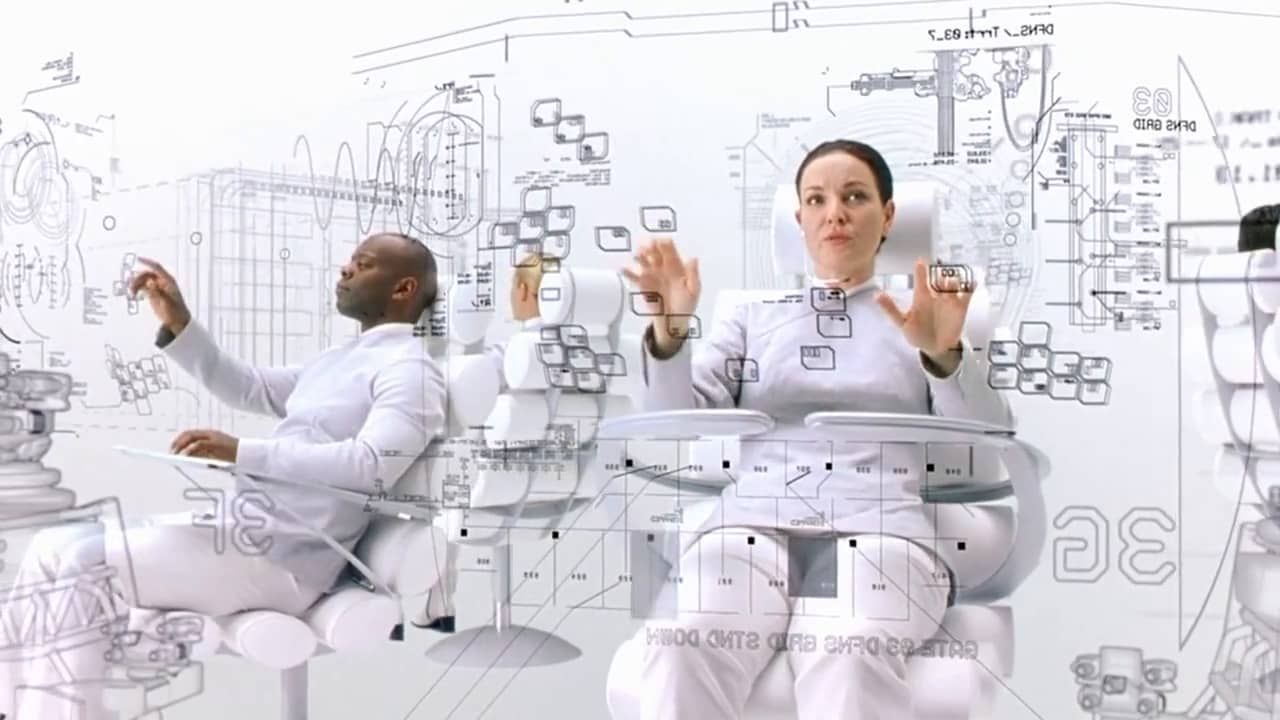
Design in the everyday context
Products and services should be designed with the everyday life in mind. Some things are designed too extraordinary. A good example can be found in a scene of the movie "The Matrix Reloaded". There they use a volumetric projection screen to control Zion. Volumetric projections (VP) are often used in Sci-Fi movies because they are an easy way to make a scene look futuristic.

The Matrix Reloaded (Warner Bros)
But in this situation the director totally forgets the everyday context in the film setup. In my opinion, the VP provides basically no benefit over a normal display to the data displayed and makes it therefore not very convenient to use on an everyday basis.
Of course I prefer those extraordinary designs in movies, because they are often much more entertaining. But from time to time I see interfaces in the real world where the extraordinary aspect was prioritized over user experience.
There is also good design in Sci-Fi movies. A lot of everyday products were inspired from those movies. For example the gestures on our smartphones or trackpads. Best known the pinch to zoom gesture. So Sci-Fi is an important source for inspiration in our everyday life as designers.
Defamiliarization
But how to come up with such fantastic ideas like the ones in Sci-Fi movies? Like always there is no wonder receipe for creativity. But one way to generate ideas (or seeing a new perspective, hidden connections, problems and solutions) can be defamiliarization. When doing defamiliarization, for example on a glass, you ask simple questions like: "What is this glass for?" Then you answer this question with everything that crosses your mind: "Storing, breaking, seeing through, using it as a lid, stack it, ..."
Other questions supporting this process are:
- What is the texture of the object?
- What is the shape of the object like?
- How could you misuse the object?
Knowledge in the world and knowledge in the head
An other interesting information picked up in this weeks literature was the fact that there are two different kinds of knowledge. There is the knowledge in the world and the knowledge in our heads.
Don Norman wrote about this in book "The Design of everyday things". He categorizes those in the following sections:
- Retrievability: Knowledge in the world is easy retrievable as soon as you see or hear the object. The knowledge in the head can be harder to retrieve. You need to remember it.
- Learning: Learning is not required for in the world knowledge. It is there and immediately available because our brain processes the information as soon as we are standing in front of the object. To get knowledge in the head we need to learn by making for example faults.
- Efficiency of use: Because the processing of information in the world needs some time it is not the most efficient way of knowledge. Knowledge in the head is pretty fast once retrieved.
- Ease of use at first encounter: Knowledge in the world has a good ease of use at first encounter, because we do not need to do "trial and error" to gather knowledge.
- Aesthetics: Designing aesthetic knowledge in the world is much harder than designing aesthetic for knowledge in the head.
At the end the designer must not decide for one of those two. He should just be aware of the difference of those two kinds of knowledge and use it in his design process.
Readings
- Bell, Genevieve, Blythe, M. & Sengers, P. 2005. “Making by Making Strange: Defamiliarization and the Design of Domestic Technologies”. In ACM Transactions on Computer-Human Interaction. 12. 149-173.
- Carroll, J. M. (2000). “What is Design?” In Making Use: Scenario Based Design of Human Computer Interactions. The MIT Press.
- Kirk, David S., Chatting, D. J., Yurman P. & Bichard, J. 2016. “Ritual Machines I & II: Making Technology at Home”. In Proceedings of CHI ‘16.
- Marianne de Laet and Annemarie Mol. 2000. The Zimbabwe Bush Pump: Mechanics of a Fluid Technology, In Social Studies of Science. 30/2. 225–63
- Donald Norman. 1988. The Design of Everyday Things. 54-80.
- Daniela Rosner and Jonathan Bean. “Learning from IKEA Hacking: “Iʼm Not One to Decoupage a Tabletop and Call It a Day.” Proceedings of CHI’ 09.
Shedroff, N. 2012. Make it So. Rosenfeld Media.